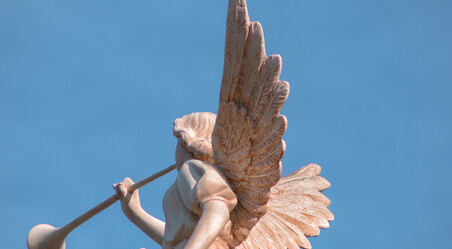Letters to the Editor
FAITH MAGAZINE January-February 2014
The Church and the documents of Vatican II
Dear Fr Editor,
Benedict XVI, when launching the Year of Faith in his Apostolic Letter Porta Fidei (way back in October 2011) saw a “crisis of faith” in the Church and in the world. He directed us, as a consequence, to study the four main documents of the Second Vatican Council as well as the Catechism of the Catholic Church, which flowed from the same source.
This would enable us to deepen our knowledge of our faith so as to understand its eminent reasonableness, accept it, live it and be able to explain it to each other and to the world around us (the New Evangelisation for the salvation of the world).
It is evident, however, that there is, within the Church, a deep-seated and widespread distrust of the Church and of its teaching. This has resulted in a marked lack of the proper response to Pope Benedict’s direction. This has to be due to a willful misinterpretation of the Council documents and of the true nature of the Church – certainly on the part of those with a leadership and interpretative role.
Any straightforward reading of the documents and the Catechism would show that:
“The Church is this Body of which Christ is the Head: She lives from Him, in Him and for Him; He lives with Her and in Her.”
“The Church is the Bride of Christ.”
“The Church is the Temple of the Holy Spirit. The Spirit is the Soul, as it were, of the Mystical Body.”
A beautiful and important summation is provided in paragraph 778 of the Catechism:
“The Church is both the means and the goal of God’s plan: prefigured in Creation, prepared for in the Old Covenant, founded by the words and actions of Jesus Christ, fulfilled by His redeeming Cross and His Resurrection; the Church has been manifested as the Mystery of Salvation by the outpouring of the Holy Spirit. She will be perfected in the glory of Heaven as the assembly of all the Redeemed of the Earth.”
Any dissent from the authoritative teaching of our Holy Church has to contend with the inconvenient truth that when we reject the Church and its teaching we reject Jesus Christ Himself.
Yours faithfully,
Frank Donohoe
Dorset
Evolution and Catholicism
Dear Fr Editor,
Just a quick word to say that browsing through back issues of your good magazine I read with great interest about the debate between the biologist Richard Dawkins and Cardinal Pell (July-August 2012). Every age has an angry atheist and I think we are lucky in having such an entertaining one as Dawkins on the war path.
At school I was taught that science and Christianity can happily go hand in hand. I think this is true as science “simply” explains the mechanics of things and Christianity the why and reason for these mechanics.
However, if one tries to argue a 7,000-year-old universe, dinosaurs on the ark and so on, it will be a happy hunting ground for the likes of Dawkins. Evolution and Christianity are not in conflict.
Yours faithfully,
Jonathan Brewer
Cornwall
Balthasar and Our Lady
Dear Fr Editor,
The recent articles and correspondence on Hans Urs von Balthasar and Our Blessed Lady, as well as on Fatima, once again underline the crucial role that Mary plays in the work of our redemption and the truly remarkable way in which God has reconciled His creatures to Himself. Understand her role and you understand the marvellous way in which God has brought us back into His love!
That “Fiat” at the Annunciation is why we are here today united to each other in faith and reality in the Mystical Body. Von Balthasar continually sees a fusion between Christ, His Church and Mary. The importance of the “Fiat” has not been lost in the writings of the Church. Heaven waited with bated breath for Mary to acquiesce and co-operate. This frisson was beautifully put by Ambrosius Aupert, Abbot of the monastery in Benevento in the 8th century, when he wrote:
“O Blessed Mary, the entire entrapped world implores you to say yes; the world makes you, O Mistress, the pledge of its faith. Do not hesitate, Virgin, but hasten to answer the messenger and conceive the Son; have confidence and feel the strength that comes to you from above.”
Von Balthasar continually stresses this union of Mary with Christ and the Church as he says: “At the heart of the Church, however, stands Mary, and what applies to her Son’s Eucharist applies analogously to her: it is not that she is in heaven or on earth, but she is earth lifted up to heaven and turned toward earth. Nor is there anything strained here: it is all perfectly natural, for this is how the creature’s ultimate state was envisaged” (You Crown the Year, p199). The priest at Mass says “This is My Body” and Mary can look at her Son and also say “This is My Body!” This is the clearest statement of the unity of Mary with Christ and with His Church.
In 1986 Cardinal Ratzinger, long before he became Pope Benedict, echoed this view of Mary and the Church when he wrote: “The Church is not an apparatus; she is not merely an institution; she is not even one among many social entities – she is a person. She is a woman. She is a mother. She is living. The Marian understanding of the church is the most decisive contrast to a merely organisational or bureaucratic concept of the Church.
“We cannot make the Church; we must be the Church. And it is only to the degree in which faith stamps our being more than our doing that we are the Church, that the Church is in us. It is only in being Marian that we become the Church. In her origins, the Church was not made, but born. She was born when the fiat was aroused in Mary’s soul. That is the deepest desire of the Council: that the Church awaken in our souls. Mary shows us the way.”
Canon George D Smith wrote a book in 1938, published by Burns & Oates, called Mary and Our Redemption. In it he outlines why Mary is Co-Redemptrix and Mediatrix of grace. This is Mary’s role now. Her apparitions have only this end in view, and the actual promises and predictions she gives are incidental to her main role of helping her Son bring to fulfilment the destiny planned for the human race when the Father decided to create. Just as Mary started the work of our Redemption so she is integrally connected with working for its fruition.
There are many (especially the Franciscans of the Immaculate) who would like to see a fifth Marian dogma, namely Mary proclaimed as Co-Redemptrix, Mediatrix and Advocate. After all in the Salve Regina we say: “O most gracious Advocate”. However, it must be stressed that such an understanding in no way detracts from our belief in Christ the Supreme and Sole Redeemer, but enhances it because it underlines the human co-operation in the salvific act. As St Augustine said: “God who made us without us will not save us without us!” God always seeks our co-operation. He does not impose on us. Our will is always free, if unfortunately vitiated by original sin. God wants us to love Him but love has to be free. You cannot force someone to love you!
It would seem that only ecumenical sensitivities are preventing a movement towards this fifth dogma. But unity among Christians will not be achieved in spite of Mary, but because of her. Get non-Catholics to say the Rosary and it won’t be long before they become Catholics.
Yours faithfully,
Christopher Bull
Canterbury






